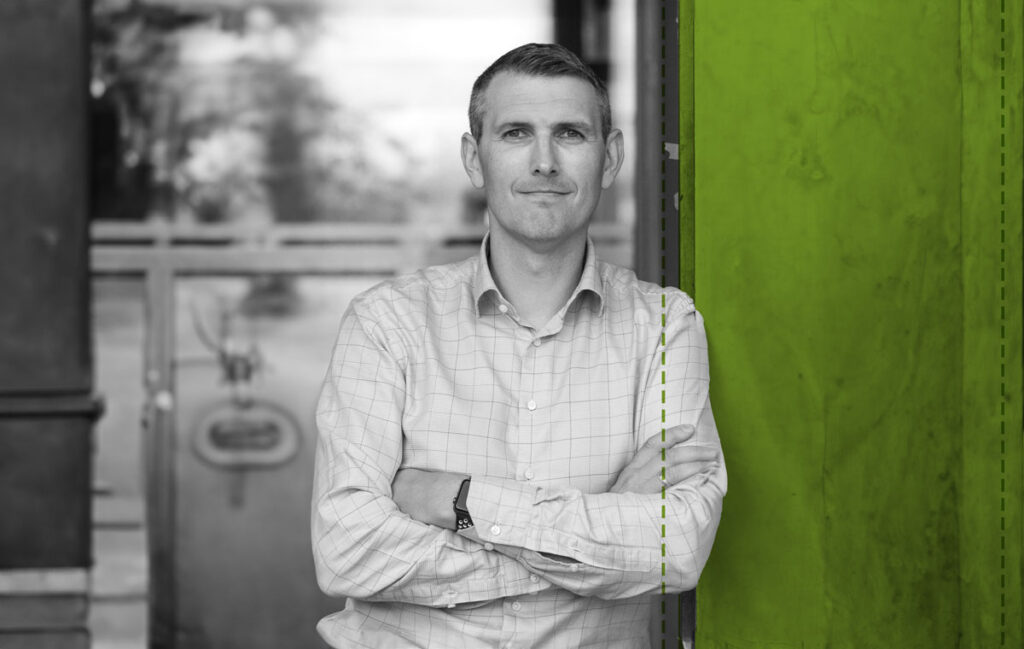24 April 2025 – Johan Elf returned to his alma mater of Uppsala University in 2008 after a postdoctoral position at Harvard and was appointed a professor in 2013. Elected an EMBO Member in 2022, we talked with him about his work and the importance of EMBO to his career.
What drives you as a scientist?
As a scientist with an engineering background, I’m driven by solving fundamental problems through technical innovations. In our lab, we aim to understand, for example, how molecules search for and identify specific genetic information in the genome or how replication is synchronized with the cell cycle, and many of our questions have required technological developments. For instance, to bridge the gap between advanced imaging and high-throughput genetic engineering, we introduced in 2017 in Molecular Systems Biology the Optical Pooled Screening technique, a technology that can be used to phenotype a large strain library using live cell imaging and subsequently identify the genetic identity of the strains by in situ genotyping.
Where might this lead?
More recently, we started working on a more applied project targeting rapid diagnostics of antibiotic resistance, using our techniques for microfluidics, imaging, and deep learning. We started with pathogens from urinary tract infections, but right now, we are refocusing on tuberculosis, a much more complicated pathogen.
Conducting research on tuberculosis needs certain requirements, such as access to a biosafety level 3 (BSL-3) research infrastructure that provides the necessary protection to work on microbes that can cause serious or potentially lethal diseases. This has been a learning experience for me.
Of course, we also did not have the skills or competencies to tackle all the technical aspects of these applied projects and collaboration outside of academia proved very fruitful.
In addition to your basic research, are you involved in innovation and translation?
I launched in 2017 Astrego Diagnostics, a spin-off company dedicated to building commercial instruments to aid in the diagnosis of urinary tract infection and provide support in the global fight against antimicrobial resistance. We learned the value of collaborating with real mechanical and electrical engineers and designing for manufacturing.
This experience has enhanced how we build devices in our university lab, making our approach much more professional. I’ve become more and more interested in developing research projects through the scope of inter-and-transdisciplinary approaches as our work at Astrego Diagnostics spans both the academic and industrial spheres.
How has EMBO impacted your career?
The EMBO Young Investigator programme had the most significant impact on my career. The thematic meetings in the microbiology section were particularly important for networking, and the recognition from the Young Investigator Award was invaluable. The flexibility of the funding at that early stage was also crucial.
I had the opportunity to take part in establishing Science for Life Laboratory (SciLifeLab) here in Sweden and tried to promote and organize the training of young investigators on a model inspired and influenced by EMBO’s programme. I’ve now been an EMBO Member for a bit more than two years, and although I’ve not had the time to reflect on the full scope of opportunities that come with membership, I’m able to support my team by sending them to various EMBO trainings or to host Postdoctoral Fellows in my lab.
What advice would you give about enjoying a successful career in the life sciences?
The beauty of a career in the life sciences lies in the freedom to choose your questions and tools and decide how to approach problems. If this kind of autonomy excites you, there’s no better profession. One key piece of advice I’d offer is to embrace interdisciplinary and transdisciplinary approaches—seeing the natural sciences as one interconnected field rather than separate disciplines. While deep expertise in traditional disciplines sometimes is essential, there’s tremendous value in adopting approaches and solutions across traditional boundaries.
How might this approach benefit an early career researcher?
For early-career researchers, entering the academic system has become increasingly challenging. One way to navigate this is by focusing on interesting or relevant problems and developing the tools to solve them rather than learning a specific technique and looking for a problem to apply it to. I think the broader set of tools, be it computational, genetic, chemical, or engineering, you manage and can combine, the more complicated problems you can solve. While you might not achieve the depth of a specialized expert, the ability to span multiple disciplines and techniques can be a powerful asset. It is a trade-off, but one that brings fresh perspectives and unique solutions to complex problems.
Have you implemented this approach in your own lab?
At Uppsala, bridging engineering and life sciences has unlocked exciting opportunities for both fundamental research and practical applications. Remaining open to crossing disciplinary boundaries—and bringing in competencies from outside academia—can lead to innovations that wouldn’t emerge from more conventional approaches. This mindset of openness and adaptability is crucial for success in the ever-evolving landscape of life sciences.



